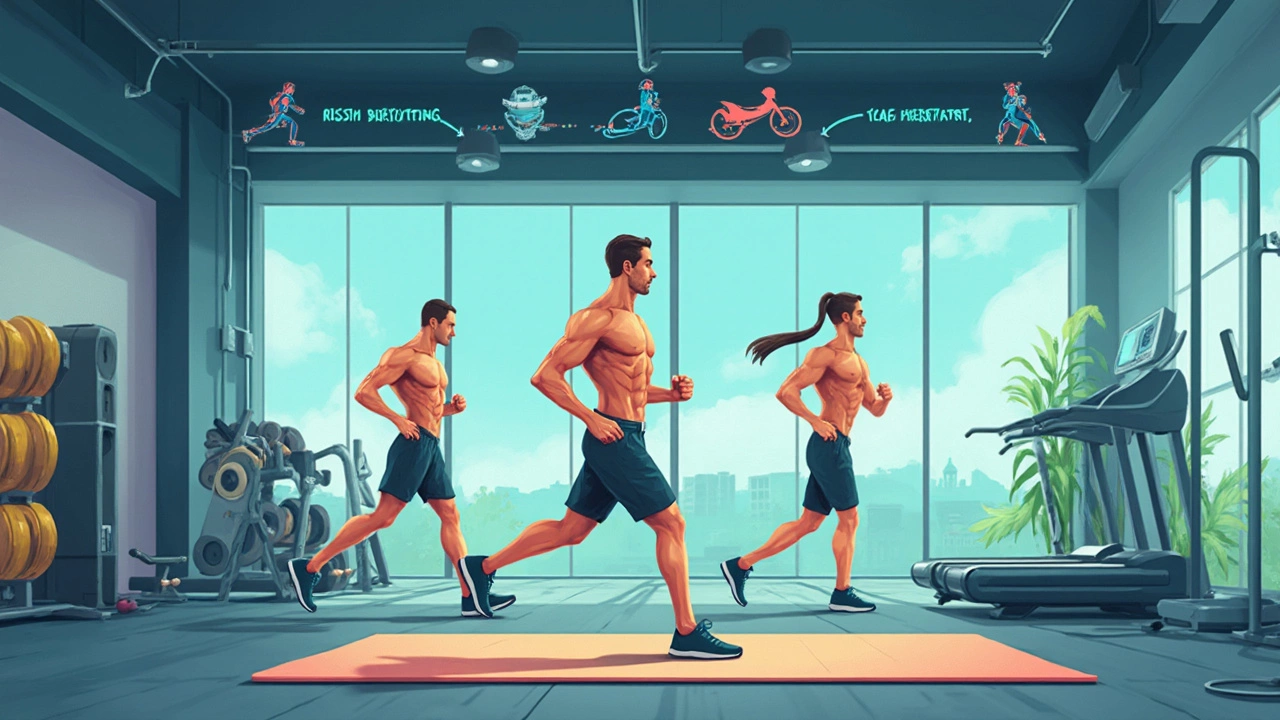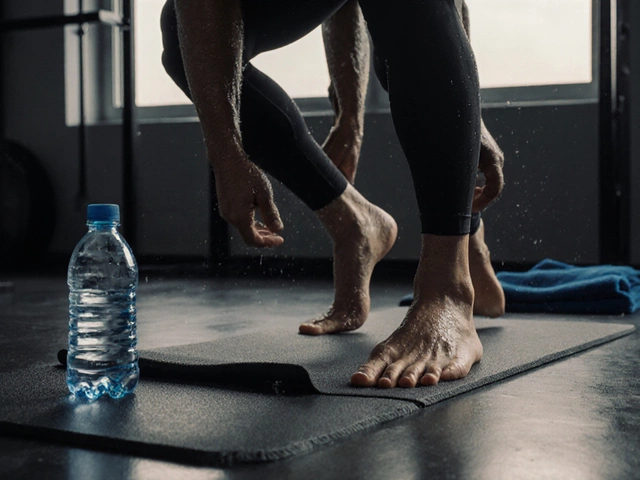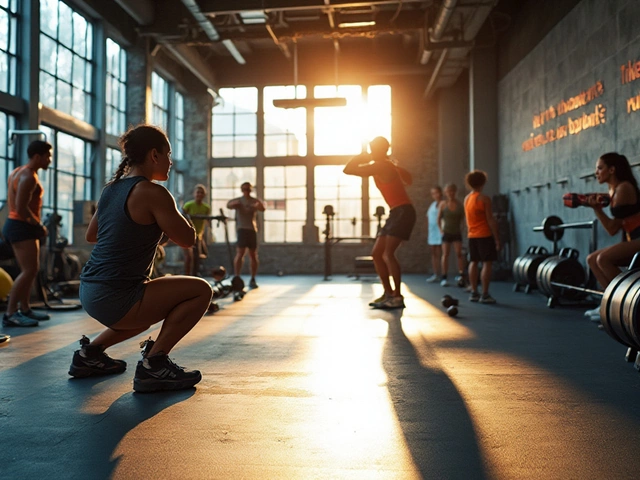
Gym Workouts April 9, 2025
The Right Order for Your Gym Workout: What You Need to Know
Figuring out the best order for your workout routine is one of those little things that can make a big difference. Ever walked into the gym and just gone for whatever machine was free? Well, you’re not alone, but there’s a smarter way to do it. Imagine you’re building a house: you wouldn’t start with the roof. Your workout should start with a good foundation too.
So, why does the order matter? Doing your exercises in a strategic order helps you avoid fatigue in muscles you might need for big lifts. For example, focusing on strength training before cardio ensures you have enough energy for those heavy lifts.
Kicking things off with a warm-up isn’t just about getting your blood flowing. It gets your body prepped and lowers the risk of injuries. Trust me, taking just five to ten minutes to get your heart rate up a bit can save you a lot of trouble later.
- Why Exercise Order Matters
- Starting with a Warm-Up
- Strength Training First
- Cardio Comes Next
- Finish with Flexibility and Cool Down
Why Exercise Order Matters
Getting the workout order right is not just about looking cool with a plan—it's about your efficiency and results. When you arrange your activities properly, you maximize benefits and minimize risks. Let's dive into why this really counts.
First off, consider your energy levels. Your body's energy is highest at the beginning of a gym exercise session. This means starting with the most demanding exercises, like weightlifting, is the way to go. By the time you hit up cardio, you can still manage because it usually requires less intensity compared to pumping iron.
Here's another thing—muscle fatigue. If you exhaust your muscles during an intensive cardio session first, don't expect much from your strength training afterward. Pre-fatigued muscles mean you might not lift as heavy or as many times, losing some potential gains.
Research backs this up. In a study conducted, participants who performed strength training first showed significant increases in muscle strength compared to those who started with cardio. The participants who maintained a smart exercise sequence not only gained more, but they also felt they had more stamina across the week's workout sessions.
- Strength first boosts muscle growth.
- Cardio afterward helps with endurance without compromising strength.
- A planned sequence reduces injury risk.
Finally, let’s not forget your mental focus. Mentally, it feels good to tackle more challenging tasks first because once that’s out of the way, everything else can feel like a breeze. Plus, the variety keeps things interesting.
Starting with a Warm-Up
Alright, let’s kick off with why warming up is such a big deal. Jumping straight into intense exercise might feel like you’re saving time, but in reality, it sets you up for injury. Warming up preps your body by gradually increasing your heart rate and circulation, loosening up the joints, and increasing blood flow to your muscles.
Think of it this way: your muscles are like a car engine. Just as you wouldn’t drive full speed with a cold engine, your muscles need a little revving up before they can perform at their best. Spend at least 5-10 minutes doing some light aerobic activity. This could be brisk walking, cycling, or using the elliptical machine.
Once you’ve got your heart rate up a bit, it’s time to get those specific muscles ready for action. Dynamic stretches come in handy here. This isn't your old-school 'reach and hold' kind of stretching. Instead, you’ll be moving through positions that replicate the main workout activities. Include exercises like arm circles, leg swings, or lunges with a twist.
Research suggests that a good warm-up may not only reduce the risk of injuries but can actually improve your performance during your main exercises. So, set those machines aside and focus on some solid prep work first. It might take a bit of extra time at the start, but it’ll make the rest of your workout much more effective.
Here’s a quick run-down of what a simple warm-up might look like:
- 5-minute brisk walk or light jog
- Dynamic stretches: arm circles, hip circles, and leg swings
- A few bodyweight exercises: squats and lunges can work wonders
These steps are easy to follow and ensure your body’s well primed to tackle whatever workout you've planned. Remember, a good start sets a positive tone for the entire session!

Strength Training First
Why does it make sense to kick off with strength training? Well, when you're full of energy at the start, you're in the best shape to tackle those challenging lifts and strength training exercises. The idea is to make the most of your physical resources while you're still fresh! It's much harder to bench press your body weight after a long run, right?
Prioritize compound exercises at the beginning of your workout session. These exercises, like squats, deadlifts, and bench presses, target multiple muscle groups at once, giving you more bang for your buck. They also rev up your metabolism and improve overall strength more efficiently. In short, start with the heavy hitters while you've still got fuel in the tank.
Here’s a simple strategy for organizing your strength training routine:
- Start with a set of compound movements for major muscle groups.
- Mix in a few isolation exercises to target specific areas you want to improve, like bicep curls or triceps extensions.
- Go for multiple sets and reps based on your goals: higher weights with fewer reps for strength, or lighter weights with more reps for endurance.
Switching the order after doing cardio might mean you're too exhausted to lift effectively, reducing your chances of building muscle and increasing strength.
Think about it: if you've ever tried lifting weights after a treadmill session, you've probably noticed how fatigued your muscles feel. That's why it makes sense to start with strength. The goal is to make it through each exercise routine with the best form possible to avoid injury and get the best results.
Cardio Comes Next
Once you've knocked out your strength training, it's time to tackle cardio. Why? Well, think of it this way: your muscles have already put in the hard work, and now it's time for your heart and lungs to join the party. Doing cardio after weight lifting helps in burning more fat, and who doesn't want that?
Here's a neat little trick: by doing cardio post-strength session, you allow your body to tap into fat stores quicker. This happens because your glycogen stores (that's the fast energy from carbs) are already partially depleted from all that lifting. So, your body starts burning fat sooner – pretty sweet deal, right?
When it comes to choosing the type of cardio, it depends on your goals. If you're looking to lose weight, try steady-state jogging or cycling. Want to boost cardiovascular endurance? Mix things up with interval training – short bursts of high intensity followed by a lower intensity recovery period.
Here's the lowdown of what it could look like:
- Warm Up: 5-10 minute moderate pace to get your heart rate up.
- Interval Training: 1 minute of sprinting followed by 2 minutes of walking. Repeat for 20 minutes.
- Cool Down: 5-10 minute easy pace to lower heart rate.
And don't skip the cool down! It helps your body transition back to regular activity and reduces the risk of feeling lightheaded. Believe me, this isn't just good for your body but also makes your workout more enjoyable, which means you're more likely to stick with it.
Feel free to adjust the duration and intensity based on how you feel. You’re the best judge of your limits and knowing when to go harder or back off is key to making progress without burning out.

Finish with Flexibility and Cool Down
Alright, you've powered through the tougher parts of your workout, and now it’s time to chill—literally and figuratively. Wrapping things up with some flexibility exercises and a proper cool down is just as important as the main part of your routine. Think of this as the gentle landing after the high-flying action.
Stretching at the end of your workout has a bunch of benefits. It helps improve your flexibility over time, which is super useful for preventing injuries and just feeling more limber in everyday life. Plus, stretching helps reduce the muscle stiffness that can follow an intense workout session.
Let’s get into some basic stretches. Focus on major muscle groups that you worked on that day. Here’s a quick list:
- Hamstring stretch: Sit down with one leg stretched out and the other bent. Reach forward gently towards your toes.
- Quadriceps stretch: Stand on one leg, grab the ankle of the other, and pull it towards your butt.
- Shoulder stretch: Pull one arm across your chest and hold for a count of three deep breaths.
After stretching, spend a few minutes walking or engaging in a low-intensity activity to let your heart rate gradually come down. Think of this cool-down period as a reset for your body, helping to return it to a state of rest.
Wrapping up with these steps actually aids in better recovery, reducing the chances of post-workout soreness, and improving your future performance. So, next time don't skip out on the flexibility and cool down phase. It's like giving a high five to your body for all its hard work!




